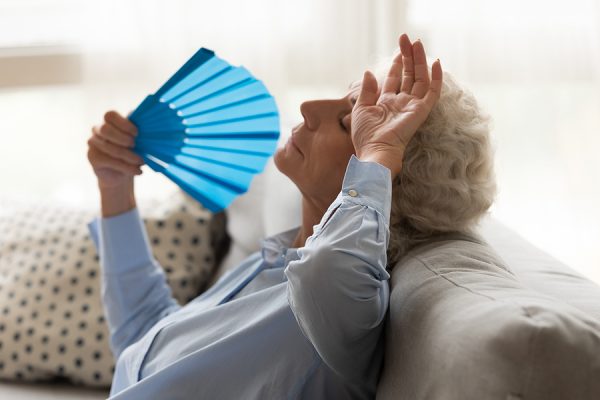All across the U.S. – from California to Louisiana and South Florida – record high temperatures are being broken. Not only that, but power grids are being stretched to their limits trying to keep millions of air-conditioners running.
So the first order of business is to try and stay as cool as possible.
If you’re stuck at home without A/C or if the power is out, a couple of cool, wet cloths can work magic, so keep a few on hand. You can wrap them around your neck, wrists or ankles to help cool you down. Sink into a tub of cool water or take a cold shower during the hottest part of the day for a full body cool-down.
Better yet, go someplace cool like the mall, movies or museum. If you like to read, which is one of my favorite sports when it’s too hot to do anything else, head to the library. Or go to Barnes and Noble to relax and read in their café.
If you have outdoor plans, try to limit them to the morning or evening when the temperatures are a little lower and find a shady spot to settle down in. I also like to take along a spray bottle filled with cold water and ice cubes. Whenever I’m feeling over heated, I just give myself a cooling spray.
Remember that the heat affects your dogs, too. Keep outdoor playtime short during high temps, and make sure to keep their water bowls full so they don’t get dehydrated.
Most importantly, never leave any living being inside a parked car, even if the windows are cracked open and you are parked in the shade. If it’s 90 degrees outside, it will reach 120 inside the car in only 20 minutes. If it’s 100 outside, the temperature inside a locked car can reach 150 degrees. That’s deadly.
Eat To Beat the Heat
In addition to staying as cool as possible, one of the most important things you can do when temperatures reach extreme highs is to make sure you’re eating foods that will provide you with plenty of hydration and nutrition.
It’s not always easy to do. After all, who wants to cook a hot meal when you are already overheated?
Plus, a lot of us lose our appetites when it’s hot outside. Basically, when our bodies work overtime to keep us cool, it acts as an appetite suppressant. At the same time, we’re sweating out all of those fluids, vitamins, minerals and other nutrients. That can create chemical imbalances in our bodies that further reduce appetite.
So the idea behind eating during a heatwave is to enjoy foods that are cooling, hydrating and nutritious.
One of my favorite summertime foods is watermelon. It’s one of the most hydrating foods you can eat; it contains about 92% water. That might make you think it’s not nutritious but, surprisingly, watermelon has plenty of nutritional value.
Watermelon is high in citrulline, lycopene, arginine, potassium, magnesium and other phytonutrients. So it provides a nutritional punch while keeping you hydrated.
The same can be said of most summertime fruits. So don’t stick with any single fruit or fruit group.
Mix and match them all; berries, stone fruits and citrus are all high in water and nutrition. Try a watermelon, berry and mango salad … an avocado, apple and mandarin orange salad … or whatever strikes your taste buds.
And don’t forget your veggies. There are some great hydrating and nourishing vegetables available to you. Zucchini, squash, spinach, eggplant, cauliflower, broccoli and cauliflower are all on the list. So are cucumbers, celery, mushrooms, radishes, bell peppers and carrots.
All of these can be eaten raw, or can be cooked in a matter of minutes. So none of them require you to slave over a hot stove cooking them for a measurable amount of time. This means you can beat the heat altogether by tossing up a veggie salad, or you can spend a few minutes throwing together a quick stir fry on the stove without heating up the entire house.
Most importantly, remember to drink several tall glasses of water each day and carry a water bottle when you leave the house!
What To Do in the Event of a Heat-Related Illness
Seniors are especially susceptible to heat exhaustion and heat stroke. The symptoms are somewhat similar, but have enough dissimilarities to identify them.
With heat exhaustion the skin is sweaty, cold and clammy. It’s not uncommon to feel dizzy or faint and have a fast, weak pulse. Nausea, headaches and muscle cramps can occur, too.
If you have any of these symptoms, stop all activity. Go to someplace cool. Bathe in cool water if you can. If not, apply cold cloths to your neck and wrists. Sip on water or a sports drink.
If you don’t have any improvement in about an hour, seek medical attention.
During a heat stroke, the body temperature is high (104 F or higher) with red, hot skin – either moist or dry. The pulse becomes fast and strong in an effort to cool the body. Headache, nausea, rapid breathing and dizziness – accompanied with confusion and even loss of consciousness – are possible.
In this case it’s urgent to call 911 and get the person cooled down. You can place ice packs on the neck, armpit and groin. If you can, get them in a shower or tub with cool water. Do everything you can to help lower their body temperature while waiting for the medics to arrive.
Stay calm, stay cool and be smart. You can beat the extreme summer heat this year.




